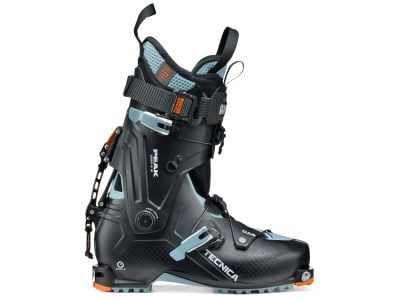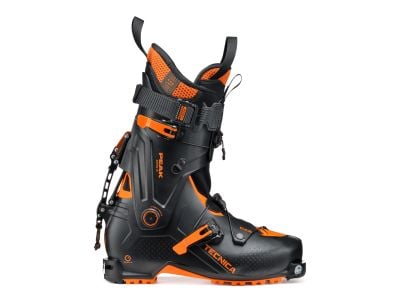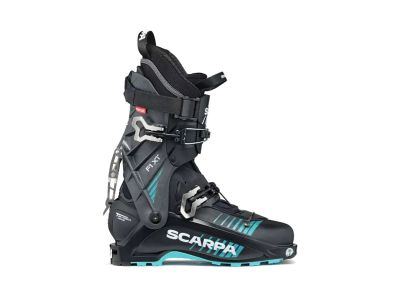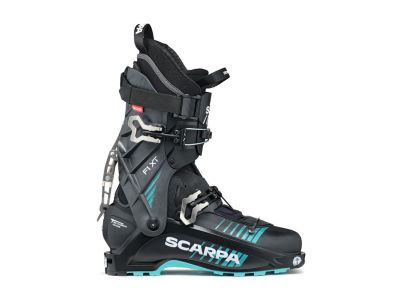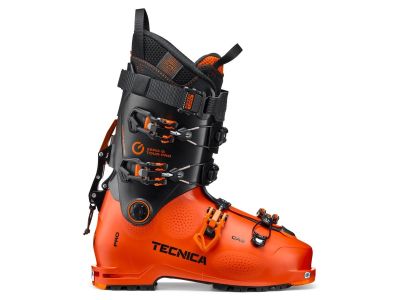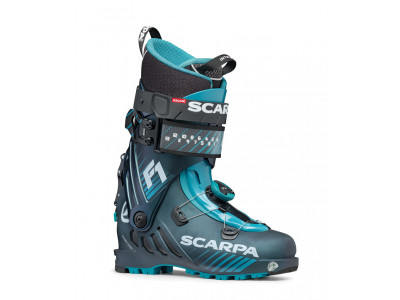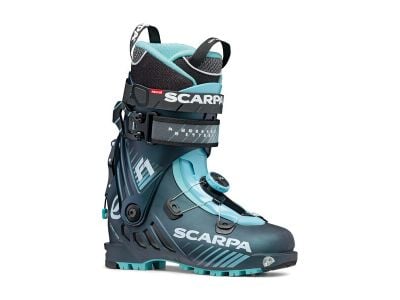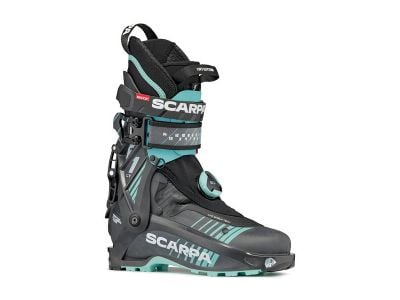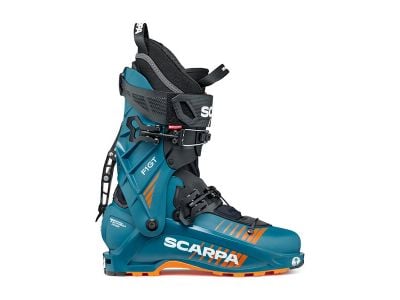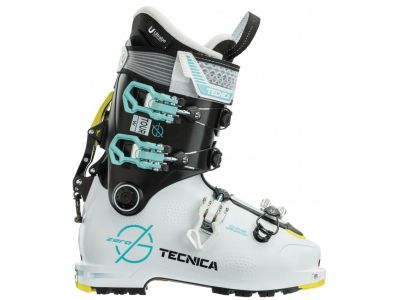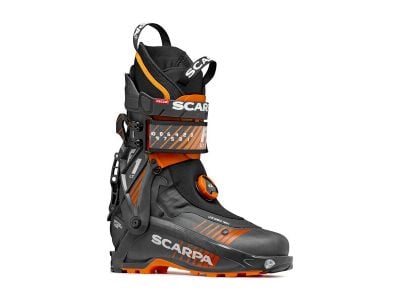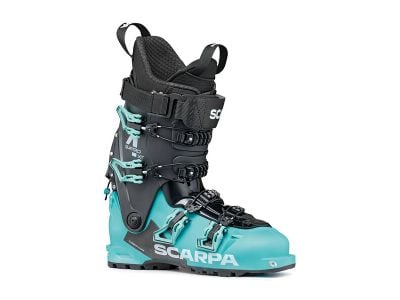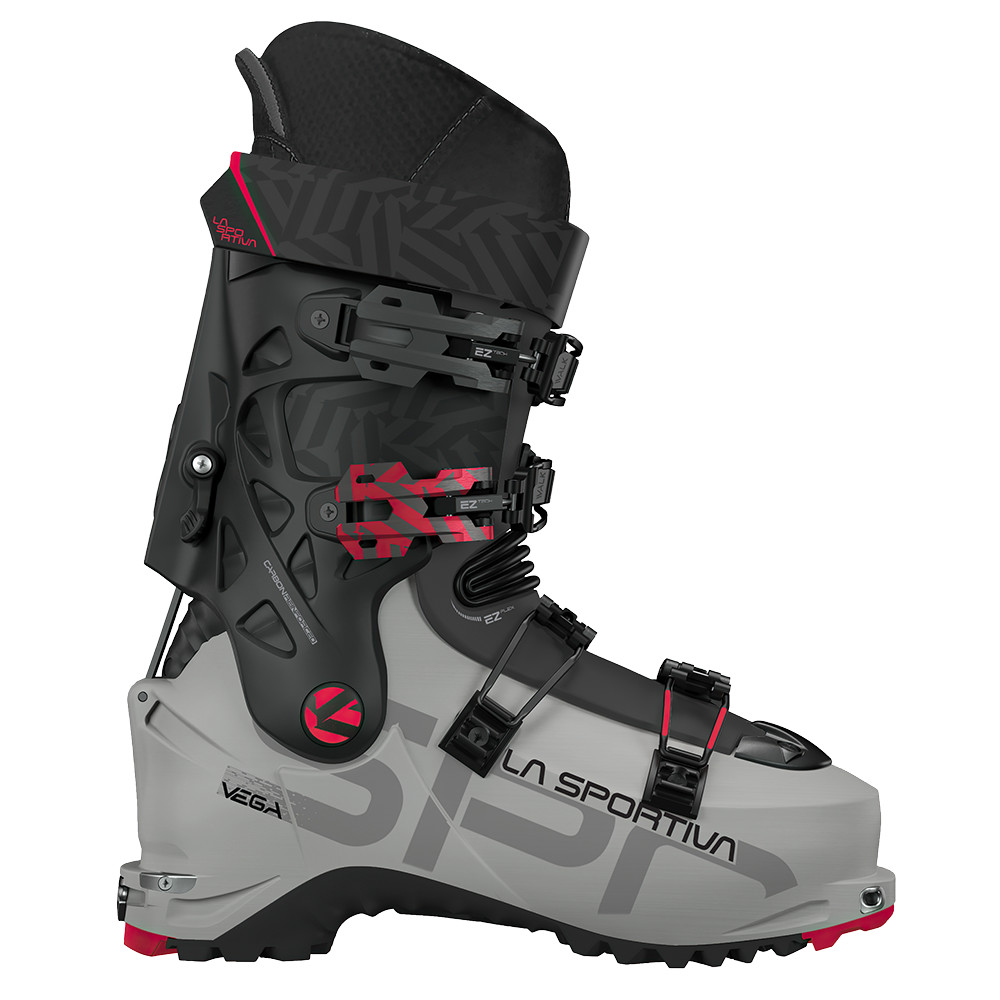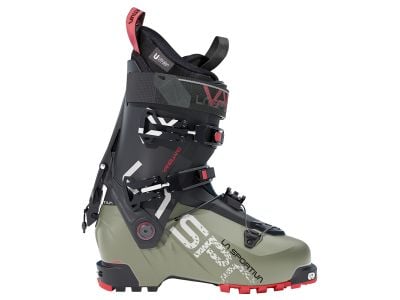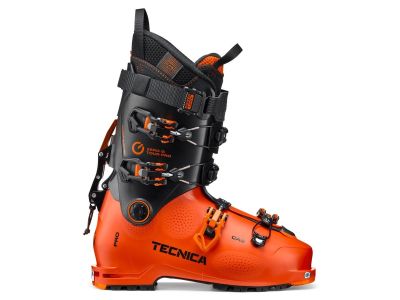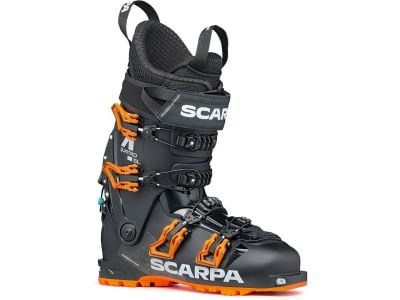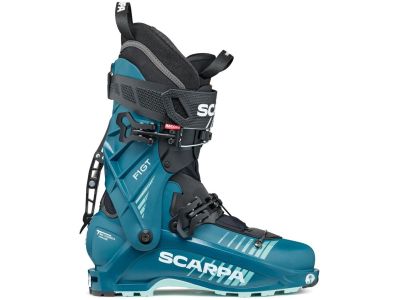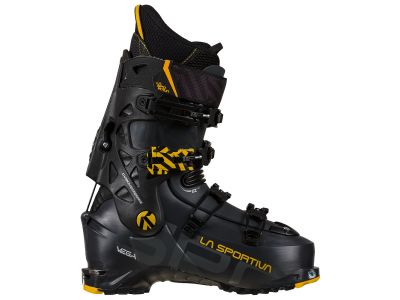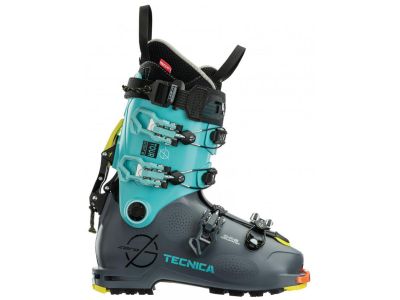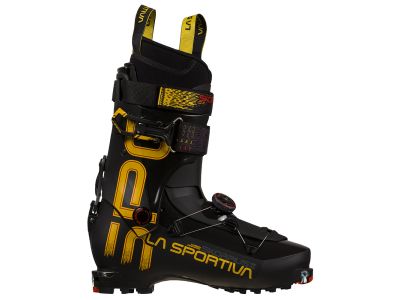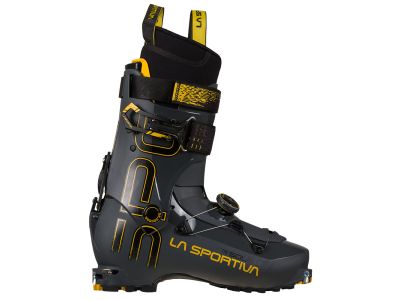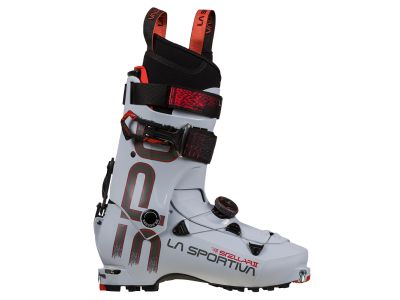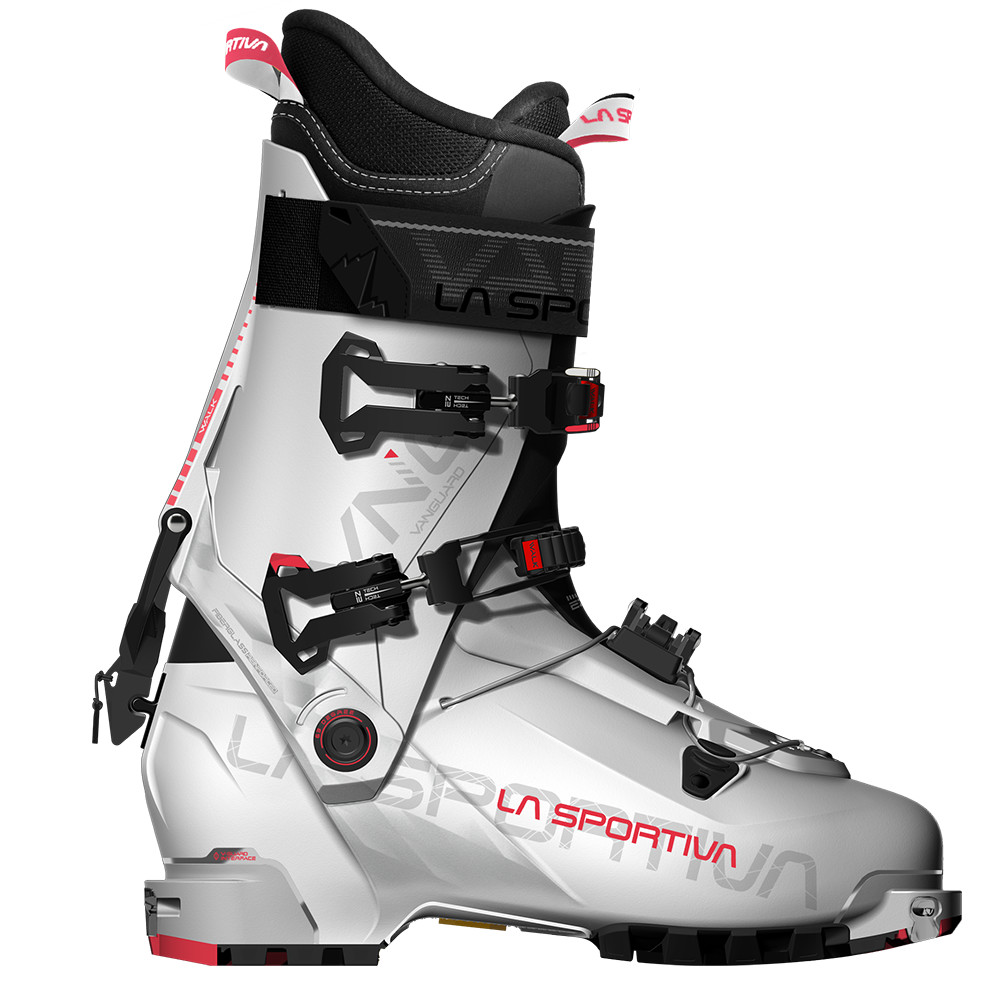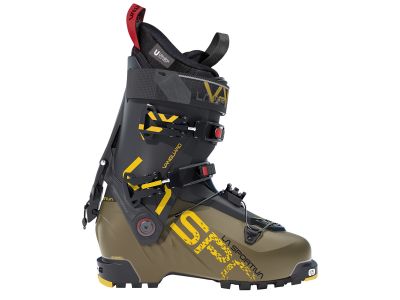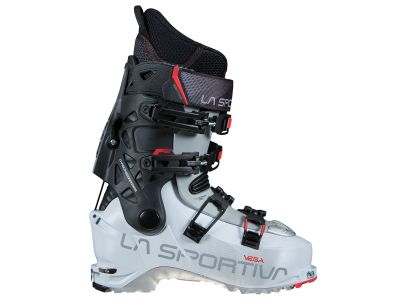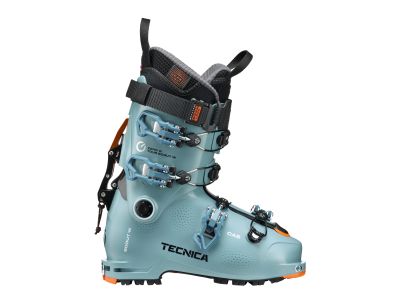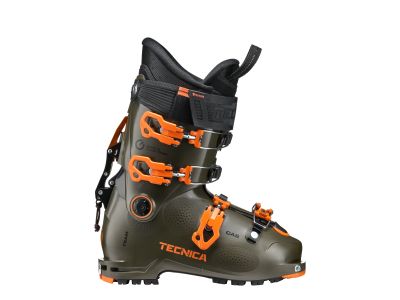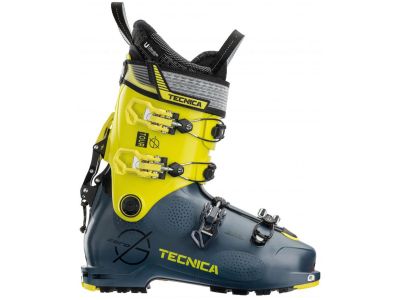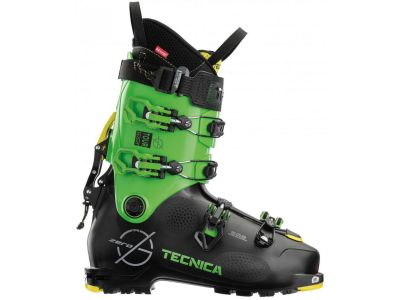Choosing a pair of ski boots is a crucial decision that can significantly affect your overall ski mountaineering and ski touring experience. When choosing ski boots for ski mountaineering, it is worth considering the following factors:
- Boot stiffness (flex): Skimo boots often have a gait mode that allows for more flexibility when climbing. Consider the boot stiffness to find a balance between comfort on the ascent and stability on the descent.
- Boot weight: Lighter boots are generally more comfortable on long climbs. But be careful not to sacrifice too much stability and support on the descent to save weight. Find a balance that suits your priorities and the type of terrain you'll be tackling.
- Liner material and insulation: Quality liners with good insulation are key for warmth, especially during cold conditions at higher altitudes. Some liners are heat-moldable to conform to the shape of the foot.
- Gait and range of motion: A reliable gait is essential for effective hill climbing. Look for shoes with a wide range of motion in the gait mode to facilitate a natural stride when walking or climbing.
Remember, skimo boots are a key part of your back country gear, and investing time and effort into choosing the right pair will pay off in comfort and performance during your hikes.
What are the main advantages of skimo boots?
Skimo boots offer several advantages for those who are into ski mountaineering or back country skiing. Here are some of the benefits of alpine ski boots:
- Hill climbing efficiency: The combination of lightweight construction and walking mode allows skimo skis to offer better hill climbing efficiency. Skiers can conserve energy on the climb and climb more comfortably and efficiently, leading to less fatigue and a more enjoyable hiking experience.
- Versatility: Skimo boots are designed to be versatile, allowing skiers to find a balance of features needed for both downhill and ascent.
- Compatibility: Skimo boots are compatible with skimo bindings, which are specifically designed for ski mountaineering. However, they can also be used with standard downhill bindings.
What is the difference between skimo boots and traditional downhill ski boots?
Skimo boots are designed specifically for ski mountaineering and back country skiing. They are generally lighter, more flexible, and have a walking mode mechanism for better mobility when climbing hills. On the other hand, traditional downhill ski boots prioritize downhill performance with a stiffer construction and less range of motion. Here are some of the benefits of skimo boots:
What types of ski boots are there?
- Lightweight touring boots: These boots are designed for skiers who prioritize efficiency on the climbs and weight savings. They are typically made from lightweight materials such as carbon fibre or Grilamid to reduce weight without sacrificing strength. Lightweight touring boots have a more flexible construction that allows for a greater range of motion during uphill climbing. They are ideal for long hikes and for skiers who prioritize speed and endurance.
- Freeride ski boots: These ski boots strike a balance between climbing efficiency and downhill performance. They offer a bit more stiffness and support than lightweight touring ski boots, providing better power transfer and control when skiing downhill. Freeride ski boots are suitable for skiers who want to enjoy free-skiing while still being able to handle challenging runs and varied terrain.
- Freestyle ski boots: These boots are designed for skiers who want to combine back country skiing with freestyle techniques. They offer a stiffer flex and a more robust construction, which provides greater downhill performance, better responsiveness and durability. These boots are suitable for skiers who prefer aggressive downhill skiing and technical runs, while still being able to hike uphill.
Can I use ski boots for skiing in the resort?
Skimo boots are primarily designed for ski mountaineering and back country skiing, but some models may also be suitable for resort skiing. However, they may not provide the same level of downhill performance and stiffness as traditional downhill ski boots. It is important to consider your skiing style and preferences before using skimo boots for resort skiing.
